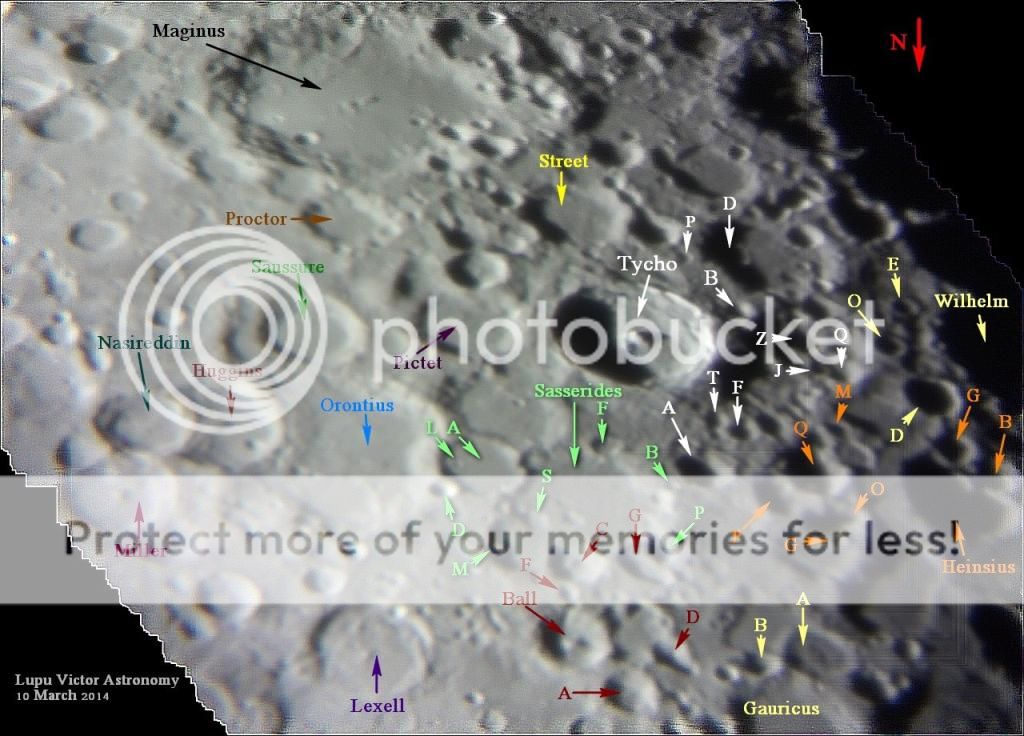The south of the Moon is full of countless craters, where large basins of lava are missing. Craters Heraclitus and Licetus (90/75 km) are some of seen in these images processed also in Registax.
The astronomical telescope is pointed at the Moon's south pole, using motor tracking from Lacerta. Watch here craters as Heraclitus / Licetus (90/75 km) Maginus (163 km), Orontius (122 km), Tycho (85 km), Sasserides (90 km), Saussure (54 km).
The atmospheric quality has helped me quite a lot to shoot clear images of the area. The land in sunlight is white as milk. This color stops at the terminator at the large crater Clavius, where we encounter a hard penetrating dark.
The video was also used in Registax program to process images with higher quality, but also for simple video captures.
The video was made with the camera mounted on the telescope, to be more exact on the telescope eyepiece. To protect the telescope from vibrations, I used a tracking motor from Lacerta, and thus the image was more stable.
However, even with this tracking device for celestial bodies, there were vibrations of the telescope tube, causing the image to be slightly unstable. For this, I used the video stabilization option in Sony Vegas editing software, so the video was 100% correct on this issue.
Images processed in Registax, here.
Unprocessed images (video captures), of craters Heraclitus / Licetus are here.
 |
| 170 frames, in Registax. |
Moon Age: 9.05 days
Phase: 70.5% (0% = New, 100% = Full)
Distance: 399.221 km
Optics (telescope or lenses): Celestron C8-Newtonian telescope, eyepiece 20mm Plossl, 2x barlow
Mount: CG5 (EQ5)
Camera: Sony CX130
Filter: no
Date: 10/03/2014
Location: Baia Mare, Romania
Processing: Sony Vegas HD Platinum 10.0




 Tuesday, January 13, 2015
Tuesday, January 13, 2015
 Unknown
Unknown


 Posted in:
Posted in: 


0 comments:
Post a Comment